Kvíárjökull is a southeastern outlet glacier of Öræfajökull. Its impressive icefall and large snout are hidden behind the largest moraines in Iceland.
Kvíárjökull is 11 km long and begins at the crater rim of Öræfajökull. From an altitude of 1800 m, the glacier steeply descends and doesn’t ease off before 500 m above sea level. A rock outcrop at 1100 m leaves a marked medial moraine on the glacier’s surface, as the ice scrapes off the mountain sides and its debris is transported down. In the narrowest part of the icefall (less than 700 m wide), ice flow velocity is as high as 3 m a day (Swift and Jones, 2018).

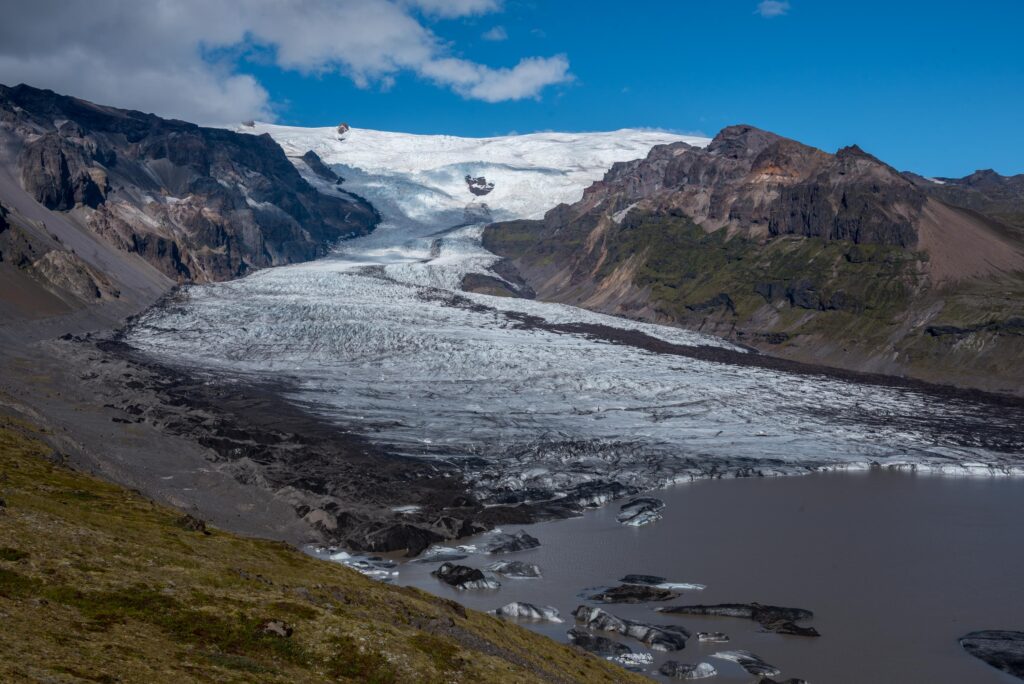
The flatter snout of Kvíárjökull lies in a trench cut into the edge of the volcanic escarpment that is enclosed by steep rock walls as much as 600 m high. Apart from this trench, glacial erosion also created a depression up to a 100 m deep that is occupied by Kvíárjökull and a proglacial lake.
Where Kvíárjökull progresses beyond Öræfajökull’s slopes, the snout and lake are surrounded by steep ridges up to 150 m high that resemble an amphitheatre. This is the moraine that was formed in times when Kvíárjökull was much longer and especially thicker. The first of such’s episodes occurred 3200 years ago, but even as recent as 1870-1890 the glacier completely filled the amphitheatre. Blocks of ice rolled down the outer slope of the southern moraine called Kvíármýrarkambur (Björnsson, 1998).
It’s no coincidence that the exceptionally large moraines are an extension of the intensely weathered rock walls. These mountain sides provide ample debris to creates the ridges. But down-glacier, the material that makes up the moraines becomes more rounded and must therefore be transported sub- and englacial (and not fallen on the surface). Kvíárjökull could erode its bed by as much as 6 mm a year. It would have taken about 500 years of subglacial erosion to form the moraines (Spedding and Evans, 2002).
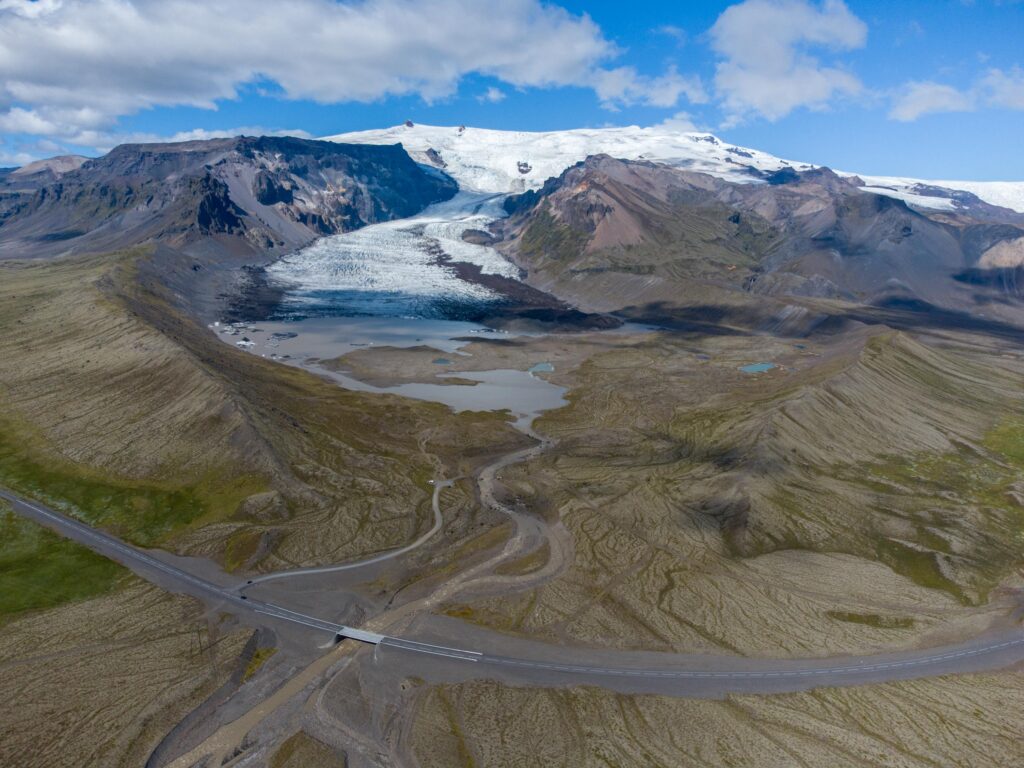
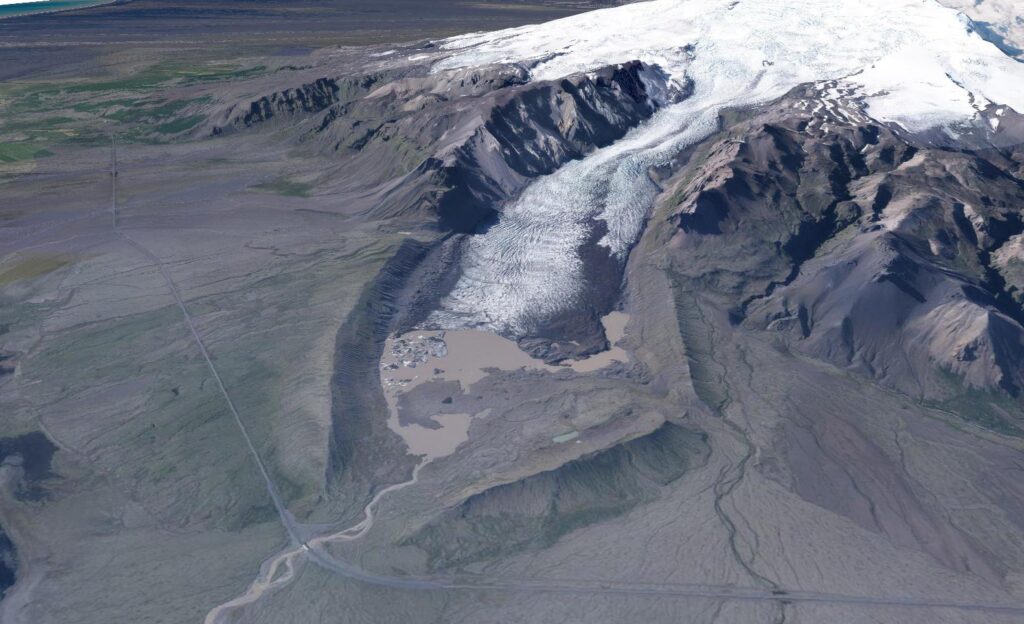

The moraine surrounding Kvíárjökull has three gaps. The eastern one holds the meltwater river, the other two were formed by glacier lobes that breached the ridge. The southern breach (called Kambskarð) might also have been used by meltwater rushing down Kvíárjökull after an eruption of Öræfajökull volcano (Iturrizaga, 2008).
Most glaciers in Iceland have been monitored closely since the 1930’s. But Kvíárjökull has a longer record, thanks to the Kvísker brothers. These men lived at an isolated farm 3 km north of Kvíárjökull and were known as skillful amateur naturalists. One of them, Flosi Björnsson, stated that the glacier had a maximum extension in 1870, although it might have been a little bit thicker in the late 18th century. It receded slowly at the start of the 20th century, advanced for a few years in the 1920’s and then started to melt more quickly (Thórarinsson, 1956).
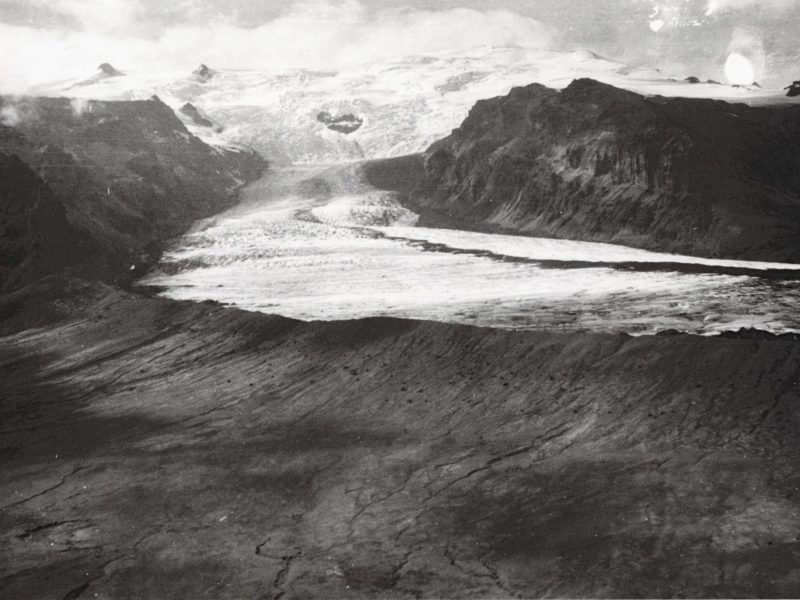

Between 1950 and 2000, Kvíárjökull hardly receded and formed some push moraines, hummocky terrain and kame terraces. These landforms mainly developed in the north, where both historically and presently the snout is more covered by debris. In the early 2000’s the glacier retreated and a lake formed at the margin of Kvíárjökull. The lake is slowly expanding, both because of glacier retreat and melt-out of buried ice (Śledź et al., 2023).
Although the glacier has been in general decline over the last decades, it experienced two markedly readvanced. The first one occurred in the winter of 2013-2014, when the northern part of the snout advanced 200-250 m and erected a new push moraine (Phillips et al., 2017). The second forward push was in the winter of 2017-2018 and was in the order of a 100 m (based on Sentinel-2 satellite imagery). Both readvances happened only in the north of Kvíárjökull.
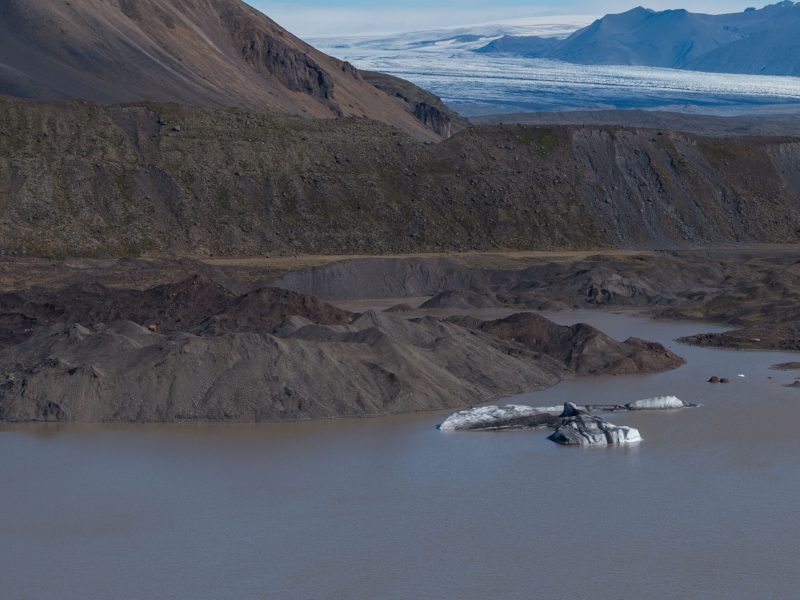
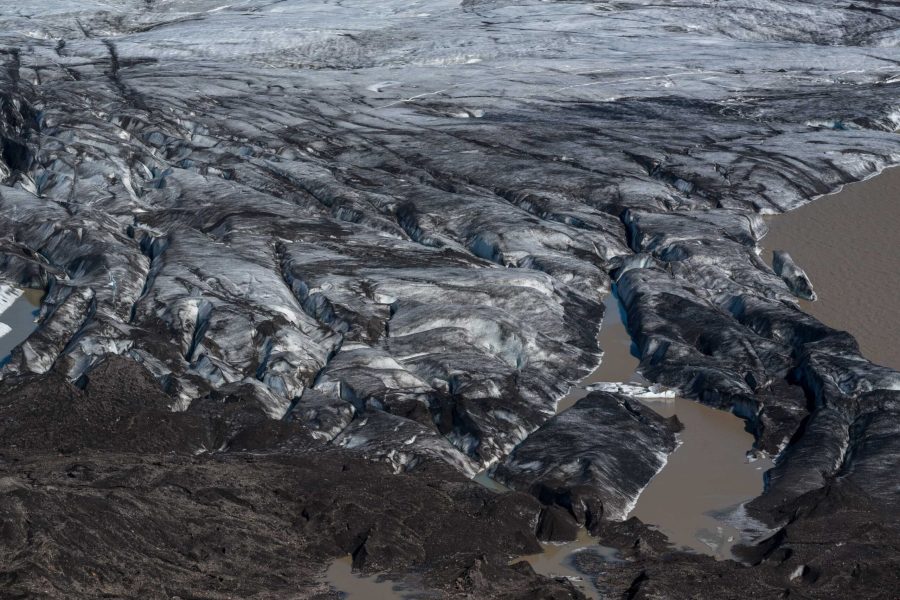
The abovementioned pulse-behavior is exemplary of Kvíárjökull’s dynamic nature. Its flow velocity varies both in time and per location. While Phillips et al. (2017) regarded the southern margin as static based on the absence of crevasses, Kaval et al. (2024) actually found higher flow velocities in the south. It lies in up to 100 m deep water and probably floats, but any advance is counterbalanced by calving. They also registered large interannual speed differences, ranging from 50 m a year in 2015 to 200 m in 2018.
Most glaciers in Iceland that develop proglacial lakes experience increased retreat. In contrast, Kvíárjökull has been surprisingly stable over the last decade, both in terms of length and surface elevation. While melt has increased, so did the transport of ice to the snout due to increased flow velocity (Kaval et al., 2024). But in recent years calving has increased and the protective layer of debris in the north is disappearing, so it remains to be seen if Kvíárjökull can keep resisting climate change.
Search within glacierchange: